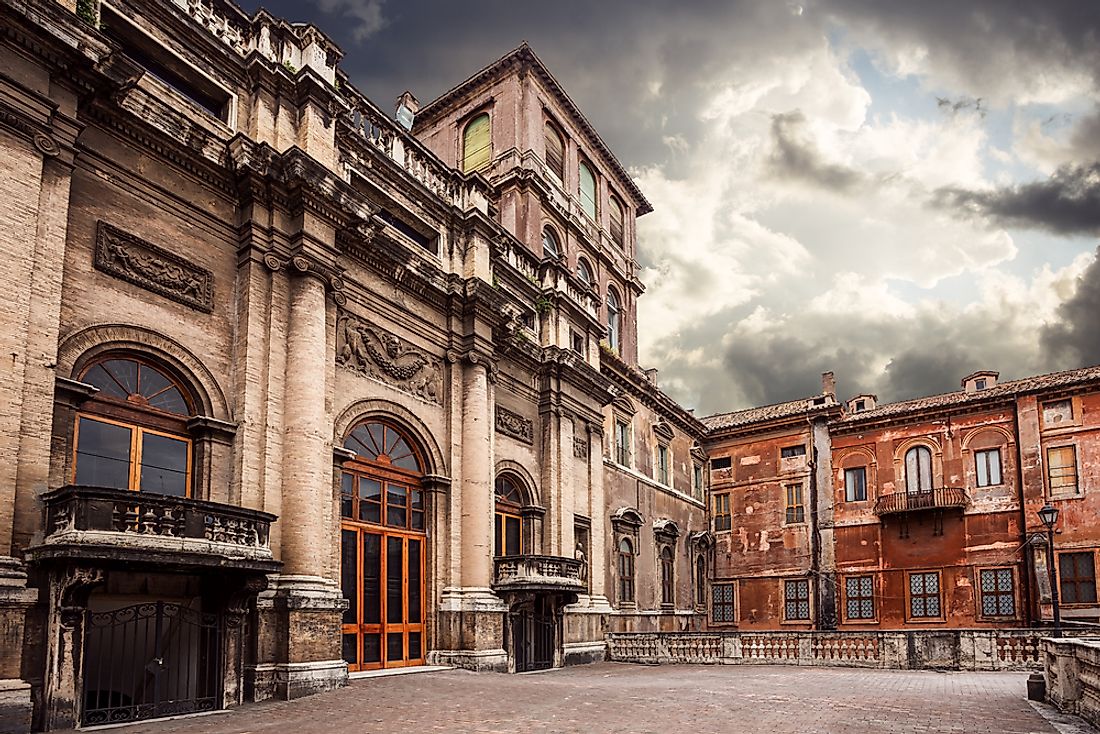Architectural Buildings of the World: Palazzo Barberini

Palazzo Barberini is a splendid Baroque building in Riona Trevi, Rome. The palace faces Piazza Barberini. It was commissioned to celebrate the rise of the Barberini family to papal power. It is now home to an ancient gallery, Galleria Nazionale d'Arte Antica. The building's elegance and luxury is said to surpass that of any other palace belonging to the Roman nobility of the 17th century.
History
The sloping site on which the palace is built was formerly a garden-vineyard belonging to the Sforza family. A small palace had once been constructed in the garden in 1549. The site was passed on from one cardinal to another during the 16th century but no major development was done on it. Cardinal Alessandro Sforza was faced by financial difficulties and in 1625 he sold the site to Maffeo Barberini of the Barberini family. Maffeo later became Pope Urban VIII.
Three great architects worked to create the palace, each of them making remarkable contributions onto its style. Carlo Modern began the construction in 1627, assisted by his nephew Francesco Borromini. When Moderno died in 1629, the contract was awarded to Bernini, a young man who was a renowned sculptor. Borromini stayed on briefly then left Bernini to work on the project until its completion in 1633.
The palace was confiscated by Pope Innocent X of the Pamphili family after the Castro Wars and death of Pope Urban VIII. It was returned to the Barberini family in 1653. The Italian government bought the Palazzo in 1949 to house the National Gallery of Ancient Art.
Architecture
The setting of the palace is that of a forecourt, with Bernini's grand two storey hall as the centerpiece and an oval salon at the back. It has extended wings dominating Piazza Barberini which lies on the lower side of the slope. A long wing at the back separates the Palazzo's garden from the Piazza.
The main house has three tiers of great arch-headed windows whose style is more Venetian than Roman. Borromini's windows on the uppermost floor create a false perspective suggesting extra depth. Two sets of stairs lead to the piano nobile. Bernini's large staircase to the left and Borromini's famous helicoidal staircase to the right. Rooms in the noble floor have frescoed ceilings by famous 17th century artists like Giuseppe.
The salon's height is that of the building. It's ceiling has the masterpiece Baroque fresco of the Allegory of Divine Providence and Barberini Power on it. The painting was done by Pietro da Cartona. The garden at the back is known as the Secret Garden since it is hidden from outsiders. It houses a monument in honour of a great sculptor Bertel Thorvaldsen.
Gallery and Attractions
The gallery features more than 1400 artworks of celebrated artists done between the 13th and 18th centuries. Caravaggio's works in the gallery include St Francis in Meditation, Narcissus and the mesmerizing horrific of Judith beheading Holophernes. La Farina by Raphael, a portrait of his lover who was a baker's daughter and the famous Hans Holbein portrait of Henry VIII are also part of the collection. Works by Titian and El Greco also grace the gallery.
The house has a hidden Mithreum in the cellars at the back of the building. It was discovered in 1936. The Palazzo also houses the Italian Institute of Numismatics.











